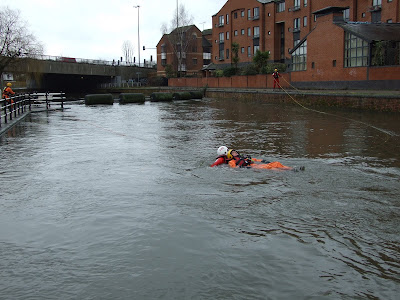Approaching Fobney Pumping Station.
High level on the gauge.
The pillars of the metal mooring platform are just visible.
Looking downstream towards Reading...
...and back to the bridge. At more normal levels there is often a small spit of land by the bridge pillar, favoured by fishermen, which provides an access point at the end of the last independent stretch of the river which rejoins the Navigation here.


























